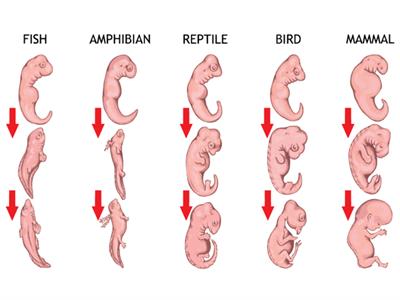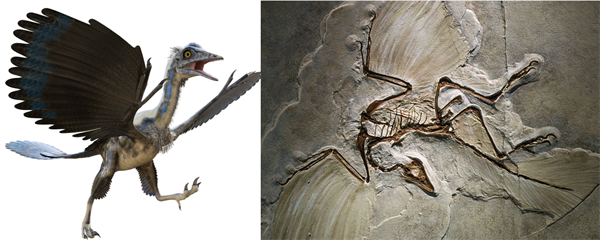PDF chapter test TRY NOW
2. Evidences from Embryology:
The study which involves the process of development of an organism from an embryo and the related aspects is known as embryology.
During the early stages of development, the embryos from fish to mammals show huge similarities. But the differentiation of their special characters appears in the later stages of development.

Embryological evidences between different organisms embryos
The similarities in the early embryonic stages of the organisms show the common ancestry of these organisms.
It is a theory given by Ernst Haeckel. According to this theory, Ontogeny recapitulates Phylogeny, which means the stages of development of the individual animal repeats the evolutionary history of the entire race of the animal.
3. Evidences from palaeontology:
The study of the history of life, which deals with the study of fossils, is known as palaeontology. Leonardo da Vinci is known as the father of Palaeontology. The study of fossils aids our understanding of the evolutionary history of numerous invertebrates and vertebrates. From simple to sophisticated species, evolution has undergone a lengthy process, according to fossil records.
The palaeontological evidence supports the genesis of contemporary birds.
Archaeopteryx:

Archeopteryx
It is the oldest fossil bird. It was a Jurassic period form that looked like a bird. It is thought to serve as a link between reptiles and birds. It had feathered wings, like a bird. Like a reptile, it featured a long tail, clawed digits, and conical teeth.
Reference:
https://commons.wikimedia.org/wiki/File:Archaeopteryx_fossil.jpg
